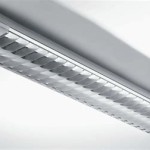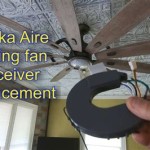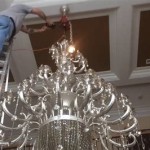The Essential Aspects of Ceiling Chandelier Wire
When it comes to chandeliers and lighting fixtures, the importance of the wires that power them is often overlooked. While the decorative aspects of these fixtures are undeniably eye-catching, it's the electrical components that ensure safe and optimal performance. Choosing the right ceiling chandelier wire for your application is essential to ensure longevity, safety, and aesthetic appeal.
Ceiling chandelier wire is a specialized type of electrical wire designed for use with lighting fixtures that are suspended from the ceiling. These wires must be able to support the weight of the fixture and its components, while also providing a reliable electrical connection. In this article, we will delve into the essential aspects of ceiling chandelier wire, covering its types, materials, gauges, and safety considerations.
Types of Ceiling Chandelier Wire
Ceiling chandelier wires come in two primary types: armored and non-armored.
- Armored wire: Consists of a flexible metal casing or braid that encloses the individual conductor wires within. This casing provides protection against damage, abrasion, and bending, making armored wire suitable for exposed or high-traffic areas.
- Non-armored wire: Does not have an external casing and consists of individual conductor wires insulated with a thermoplastic material. This type is more flexible than armored wire and is typically used in concealed or low-traffic areas.
Materials Used in Ceiling Chandelier Wire
The materials used in ceiling chandelier wire determine its durability, conductivity, and resistance to corrosion. The most common materials include:
- Copper: Known for its excellent conductivity and flexibility, copper is a preferred choice for chandelier wire. It is commonly used in both armored and non-armored wires.
- Aluminum: A lightweight and cost-effective material, aluminum is sometimes used in non-armored chandelier wire. However, it is not as conductive as copper and may experience corrosion over time.
- Steel: Used in the construction of armored wire casings, steel provides strength and protection against damage. It is not typically used as a conductor material due to its lower conductivity.
Wire Gauge for Ceiling Chandeliers
The wire gauge refers to the thickness of the individual conductor wires within the chandelier wire. The thicker the gauge, the lower the resistance and the higher the current-carrying capacity. For ceiling chandeliers, the following wire gauges are commonly used:
- 14 gauge: Suitable for most residential lighting fixtures up to 15 amps. This gauge provides a good balance of flexibility and current-carrying capacity.
- 12 gauge: Used for larger chandeliers or fixtures with higher power requirements. This gauge has a lower resistance and can handle higher currents.
- 10 gauge: Reserved for heavy-duty chandeliers or lighting systems that require substantial power. This gauge offers the lowest resistance and can support high current loads.
Safety Considerations for Ceiling Chandelier Wire
When working with ceiling chandelier wire, it is crucial to prioritize safety. Here are some essential safety considerations:
- Use the correct wire type: Armored wire should be used in exposed or high-traffic areas, while non-armored wire is suitable for concealed or low-traffic areas.
- Choose the appropriate gauge: The wire gauge must be compatible with the current requirements of the chandelier fixture. Using a wire that is too thin could lead to overheating and potential fire hazards.
- Inspect the wire regularly: Check the chandelier wire for any damage, fraying, or exposed conductors. Damaged wire should be replaced immediately to prevent electrical hazards.
- Follow electrical codes: Ensure that the installation and wiring of the chandelier adhere to local electrical codes and safety standards.
- Hire a qualified electrician: If you are not confident working with electrical components, it is recommended to hire a licensed electrician for professional installation and maintenance.
By understanding these essential aspects of ceiling chandelier wire, you can make informed decisions when selecting and installing lighting fixtures. Remember to prioritize safety, choose the appropriate materials and gauge, and follow electrical codes to ensure the longevity and reliability of your chandelier lighting.

How To Install A Ceiling Light Fixture Diy Family Handyman

How To Install A Ceiling Light Fixture Diy Family Handyman

How To Install A Ceiling Light Fixture Diy Family Handyman

How To Install A Ceiling Light Fixture Diy Family Handyman

Inside The Circuit Pendant Lighting Light Switch Wiring Homeowner Faqs

Wiring A Ceiling Fan And Light With Diagrams Ptr

Mounting Light Fixtures Fine Homebuilding

Replacing A Ceiling Fan Light With Regular Fixture Jlc

Advice On Ceiling Light Wiring English Forum Switzerland

Ceiling Light Wiring Fixed From 89 00 Electrician Bournemouth
Related Posts








